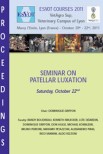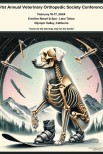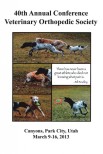Objective: To objectively quantify antebrachial morphology from computed tomography (CT) scans of Cocker Spaniels with and without humeral intracondylar fissure (HIF).
Study design: Retrospective imaging.
Methods: Three-dimensional (3D) rendered CT scans of the antebrachii of Cocker Spaniels with HIF (Group 1), or without HIF but with medial coronoid process disease (Group 2) or without HIF and with no evidence of elbow pathology (Group 3) were retrospectively reviewed. Parameters assessed were medial proximal radial angle (MPRA), lateral distal radial angle (LDRA), proximal cranial radial angle (PCRA), distal caudal radial angle (DCRA), radial torsion, proximal radio-ulnar divergence angle (PRUDA) and ulnar center of rotation of angulation (UCORA).
Results: Group 1 comprised 13 elbows from nine dogs, Group 2 comprised 22 elbows from 13 dogs and Group 3 comprised eight elbows from six dogs. There was no significant difference between groups for MPRA, LDRA, PCRA, DCRA or radial torsion. PRUDA (p < .001) and UCORA (p = .036) were significantly increased in Group 1 compared to Group 2 and 3.
Conclusion: From the population of Cocker Spaniels sampled, an increase in both PRUDA and UCORA was significantly associated with the presence of HIF.
Clinical significance: An increase in the divergent angle of the proximal radius and ulna and increased distal ulnar varus angulation in dogs with HIF could contribute to altered load through the humeral condyle, providing a mechanism for HIF formation.









